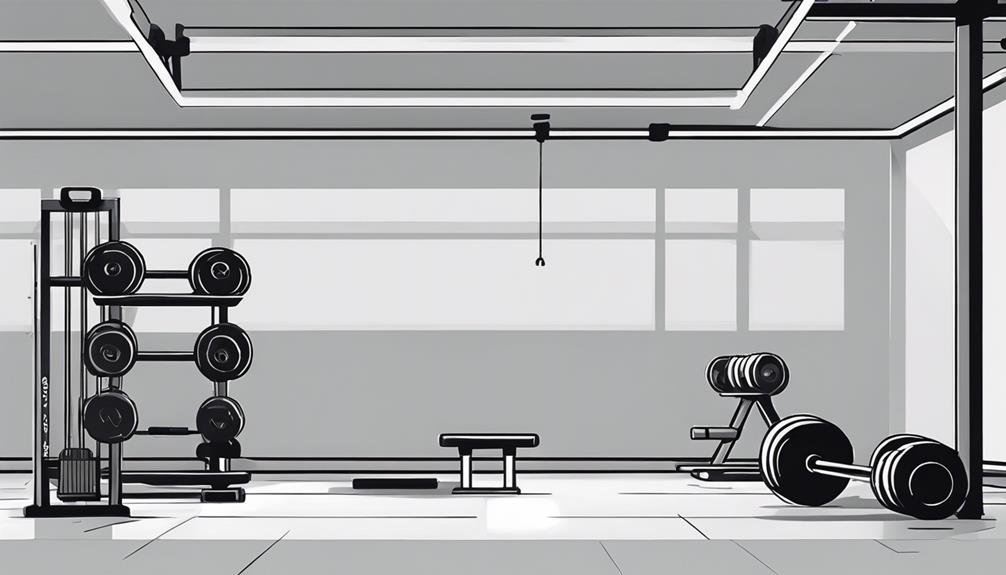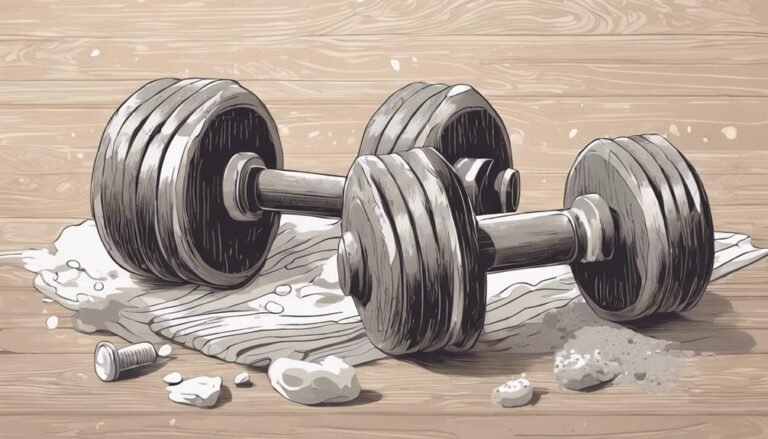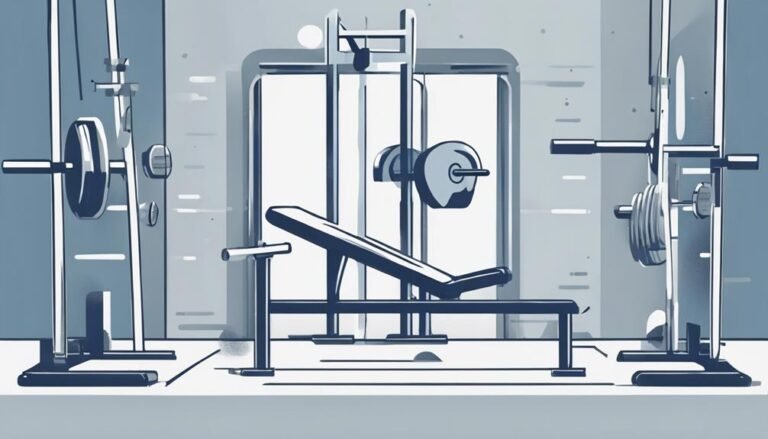Proper Lifting Techniques for Men Over 40
To lift safely as a man over 40, focus on using proper techniques that minimize injury risk. Stand with your feet shoulder-width apart and engage your core. Bend at your hips and knees, keeping the object close to your body as you lift. Always maintain a straight back to avoid strain and push through your heels. Warm up with light aerobic activity and dynamic stretches to prepare your muscles. Avoid lifting too heavy too soon, and remember to control your breathing. These foundational tips will help you lift effectively, and you'll discover even more helpful techniques ahead.
Key Takeaways
- Maintain a shoulder-width stance, bending at hips and knees to protect your back while lifting.
- Keep the load close to your body and engage your core for stability during lifts.
- Use proper grip techniques, ensuring firm control to reduce injury risks with heavier weights.
- Prioritize warm-ups and dynamic stretches to prepare muscles and joints before lifting.
Importance of Proper Lifting
Proper lifting techniques are essential for preventing injuries and maintaining your strength as you age.
When you lift with the right form, you reduce the risk of strains and sprains, which can sideline you for weeks. Using your legs instead of your back distributes the weight more evenly, allowing for a safer and stronger lift.
It's vital to keep the load close to your body, as this minimizes stress on your spine. Additionally, engaging your core muscles provides extra stability during the lift.
Practicing these techniques not only protects you but also boosts your confidence in handling physical tasks. Remember, lifting properly isn't just about moving weight; it's about preserving your body for years to come.
Understanding Your Body Changes
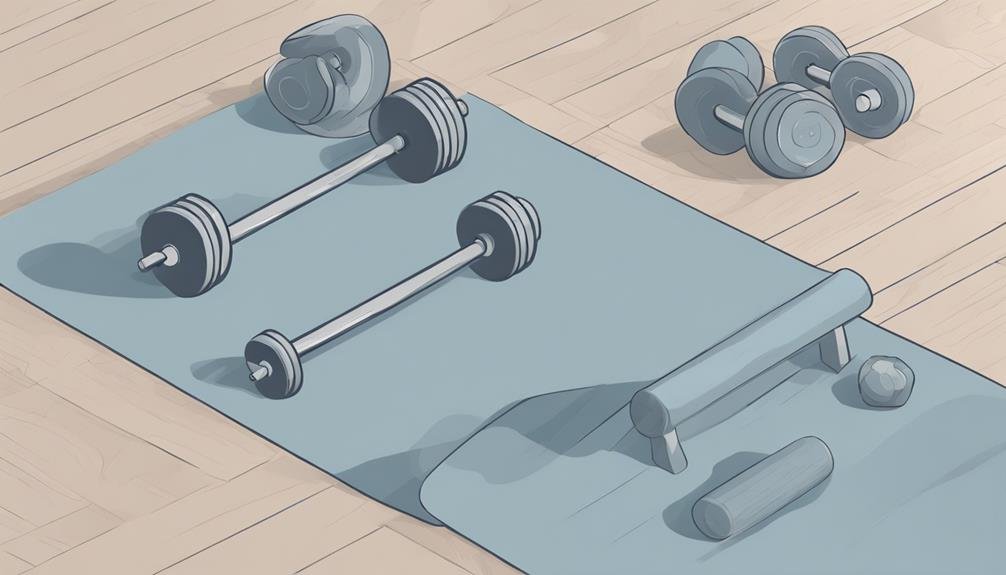
As you hit your 40s, your body undergoes several changes that can affect how you lift and move.
Muscle mass naturally declines, which means you mightn't have the same strength you once did. Your joints may become stiffer, making flexibility more challenging. This stiffness can lead to an increased risk of injury if you're not careful.
Additionally, your balance and coordination may not be as sharp, so you'll need to pay extra attention to your movements. Hormonal changes can also impact your energy levels and recovery time.
Recognizing these shifts is essential for maintaining your fitness. By understanding your body's current state, you can adapt your lifting techniques to minimize risks and maximize efficiency.
Key Principles of Lifting
Lifting with the right technique can greatly reduce your risk of injury and enhance your strength training results.
First, always keep your feet shoulder-width apart for a stable base. Bend at your hips and knees, not your back, to lower your body. Grip the object tightly with both hands, keeping it close to your body to maintain balance and control.
When lifting, engage your core and use your legs to push upward, rather than relying solely on your back. Keep your back straight and avoid twisting your torso during the lift.
Warm-Up Routines for Safety

To prevent injuries and enhance your performance, incorporating a warm-up routine before lifting is crucial.
Start with 5-10 minutes of light aerobic activity, like brisk walking or cycling, to increase blood flow to your muscles.
Next, perform dynamic stretches targeting the major muscle groups you'll engage during your workout, such as leg swings and arm circles.
Focus on movements that mimic the lifting motions you'll be doing, gradually increasing your range of motion. This prepares your muscles and joints, reducing the risk of strains.
Additionally, consider incorporating mobility exercises to enhance flexibility in your hips and shoulders.
Correct Posture and Alignment
Maintaining correct posture and alignment is essential for preventing injuries and maximizing strength during your lifts.
Start by keeping your feet shoulder-width apart and guarantee your weight is evenly distributed. Engage your core to protect your lower back, and keep your spine neutral.
When you bend at the hips and knees, maintain a straight back, avoiding any rounding of your shoulders. Your shoulders should stay relaxed and pulled back, not hunching forward.
As you lift, focus on pushing through your heels and keeping your chest up, which will help you maintain proper alignment throughout the movement.
Grip Techniques for Stability
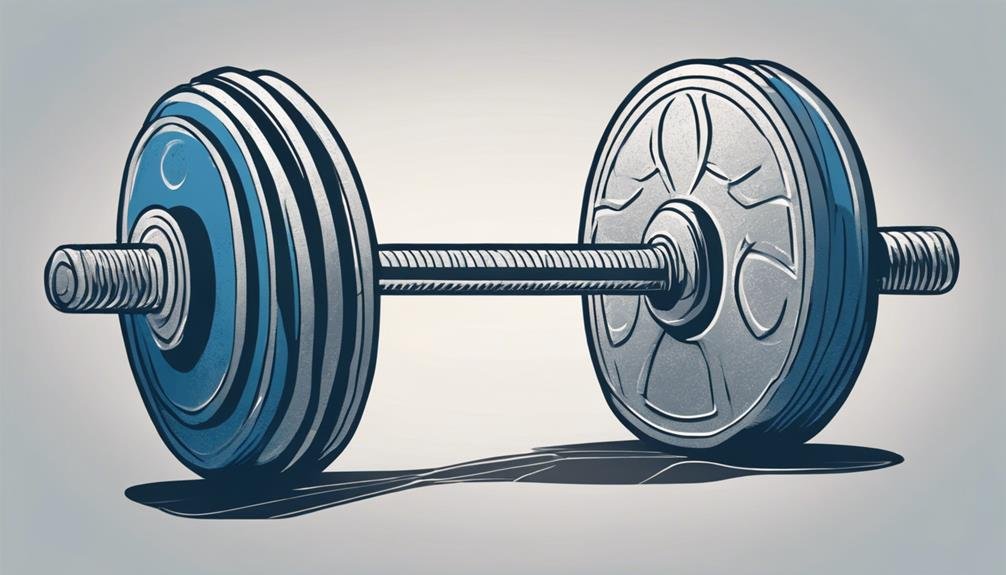
Utilizing the right grip techniques not only enhances your stability but also boosts your overall lifting performance. A secure grip allows you to maintain control over the weight, reducing the risk of injury.
Start by positioning your hands shoulder-width apart, ensuring your grip is firm but not overly tight. This prevents unnecessary tension in your forearms.
Consider using the hook grip for heavier lifts, as it locks your fingers around the bar more securely. Additionally, don't forget about your thumbs; wrapping them around the bar adds extra stability.
Types of Lifts to Focus On
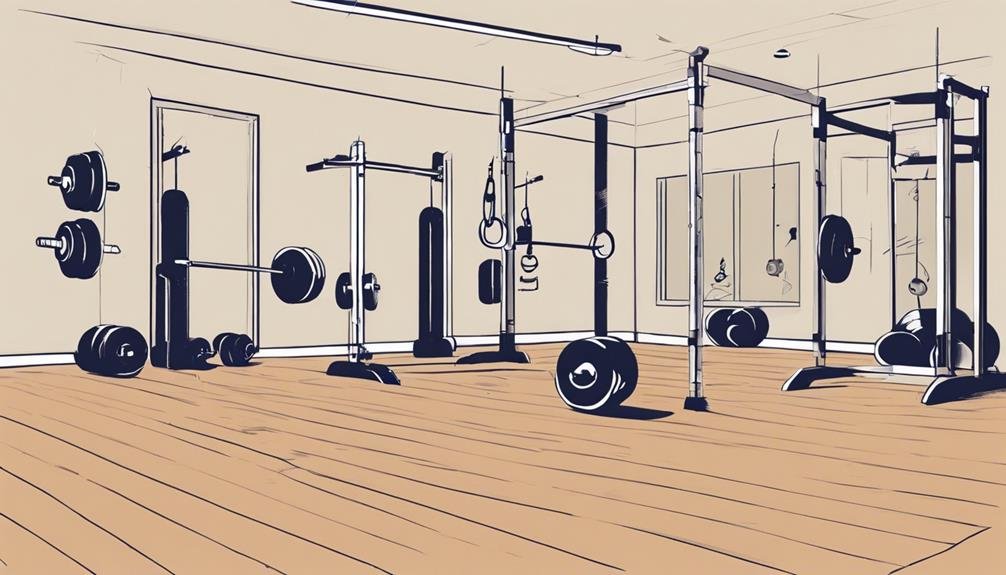
Focusing on compound lifts like squats, deadlifts, and bench presses can greatly enhance your strength and overall fitness as you age. These lifts engage multiple muscle groups, helping you build functional strength that translates into daily activities.
Consider including these key lifts in your routine:
- Squats: Strengthen your legs and core, improving balance and mobility.
- Deadlifts: Target your posterior chain, boosting your back, glutes, and hamstrings.
Incorporating these exercises can lead to better posture and reduced risk of injury. As you progress, prioritize proper form over heavy weights to guarantee safety and maximize benefits.
Common Mistakes to Avoid
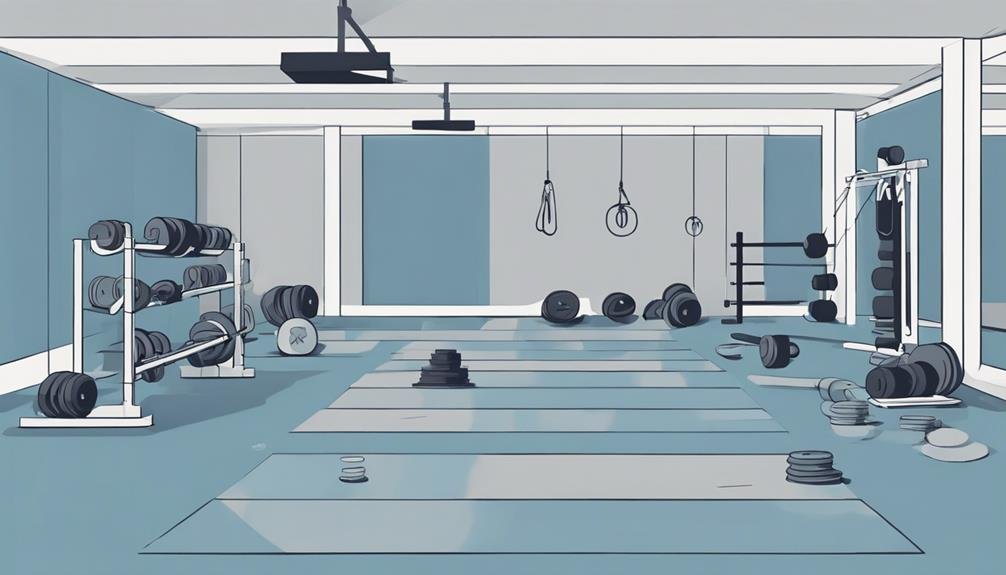
When lifting weights, many men over 40 often overlook proper form, which can lead to injuries and setbacks in their fitness journey.
One common mistake is lifting too heavy too soon. It's essential to start with manageable weights and gradually increase them as your strength improves.
Another pitfall is neglecting a warm-up. Skipping this step can stiffen your muscles and joints, increasing the risk of injury.
Also, avoid rounding your back during lifts; keep your spine neutral to protect it.
Finally, don't forget to breathe! Holding your breath can create unnecessary pressure and lead to dizziness.
Incorporating Flexibility and Mobility
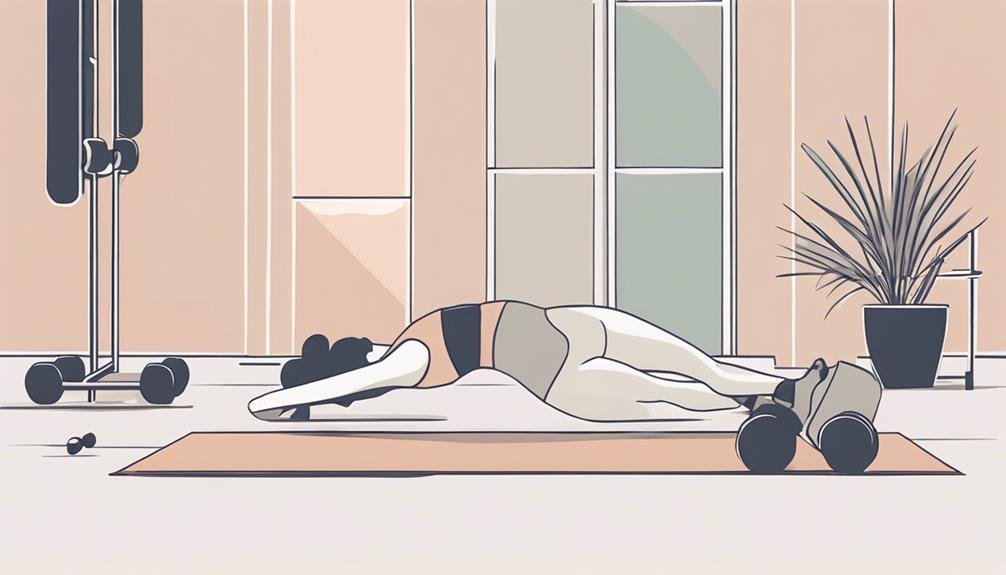
Incorporating flexibility and mobility into your routine can greatly enhance your lifting performance and reduce the risk of injuries as you age. By prioritizing these aspects, you'll not only improve your range of motion but also support your overall strength and stability.
Here are some effective ways to boost your flexibility and mobility:
- Dynamic stretches: Integrate movements like leg swings or arm circles before workouts to warm up your muscles.
- Foam rolling: Use a foam roller post-workout to release tightness in your muscles and improve blood flow.
Recovery Strategies for Lifters

Effective recovery strategies are essential for men over 40 to maintain strength and prevent injuries after lifting sessions. Prioritizing recovery helps your body repair and grow stronger. Here are a few effective strategies:
| Strategy | Description |
|---|---|
| Hydration | Drink plenty of water to stay hydrated. |
| Nutrition | Consume protein-rich meals post-workout. |
| Sleep | Aim for 7-9 hours of quality sleep. |
| Active Recovery | Engage in light activities like walking or yoga. |
| Stretching | Incorporate gentle stretches to increase flexibility. |
Questions
How Do I Know if I'm Lifting the Right Weight?
To know if you're lifting the right weight, pay attention to your form and fatigue level. You should feel challenged but still able to complete your reps without straining or sacrificing technique. Adjust as needed.
What Should I Do if I Feel Pain While Lifting?
If you feel pain while lifting, stop immediately. It's your body's way of signaling something's wrong. Assess your form and consider lighter weights or consulting a professional to avoid injury and guarantee safe lifting.
How Often Should I Lift Weights Each Week?
You should aim to lift weights about three to four times a week. This frequency allows your muscles to recover while building strength. Listen to your body and adjust based on how you feel.
Can I Lift Weights if I Have Joint Issues?
Yes, you can lift weights with joint issues, but it's essential to listen to your body. Start with lighter weights, focus on proper form, and consider consulting a healthcare professional for tailored advice.
Are There Specific Diets to Support Weight Lifting After 40?
Eating right is like fuel for your workout engine. Yes, specific diets rich in protein, healthy fats, and whole grains can support your weight lifting journey after 40, helping you build strength while promoting recovery.
Conclusion
In the grand dance of life, lifting doesn't have to be a clumsy affair, especially after 40.
By embracing proper techniques and honoring your body's evolving needs, you can lift with grace and confidence.
Remember, it's not just about the weight; it's about how you carry it.
So, let these principles guide you, avoid common missteps, and weave flexibility into your routine.
With a little care, you'll keep moving mountains—safely and smartly!

